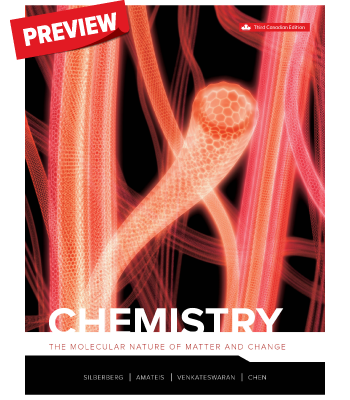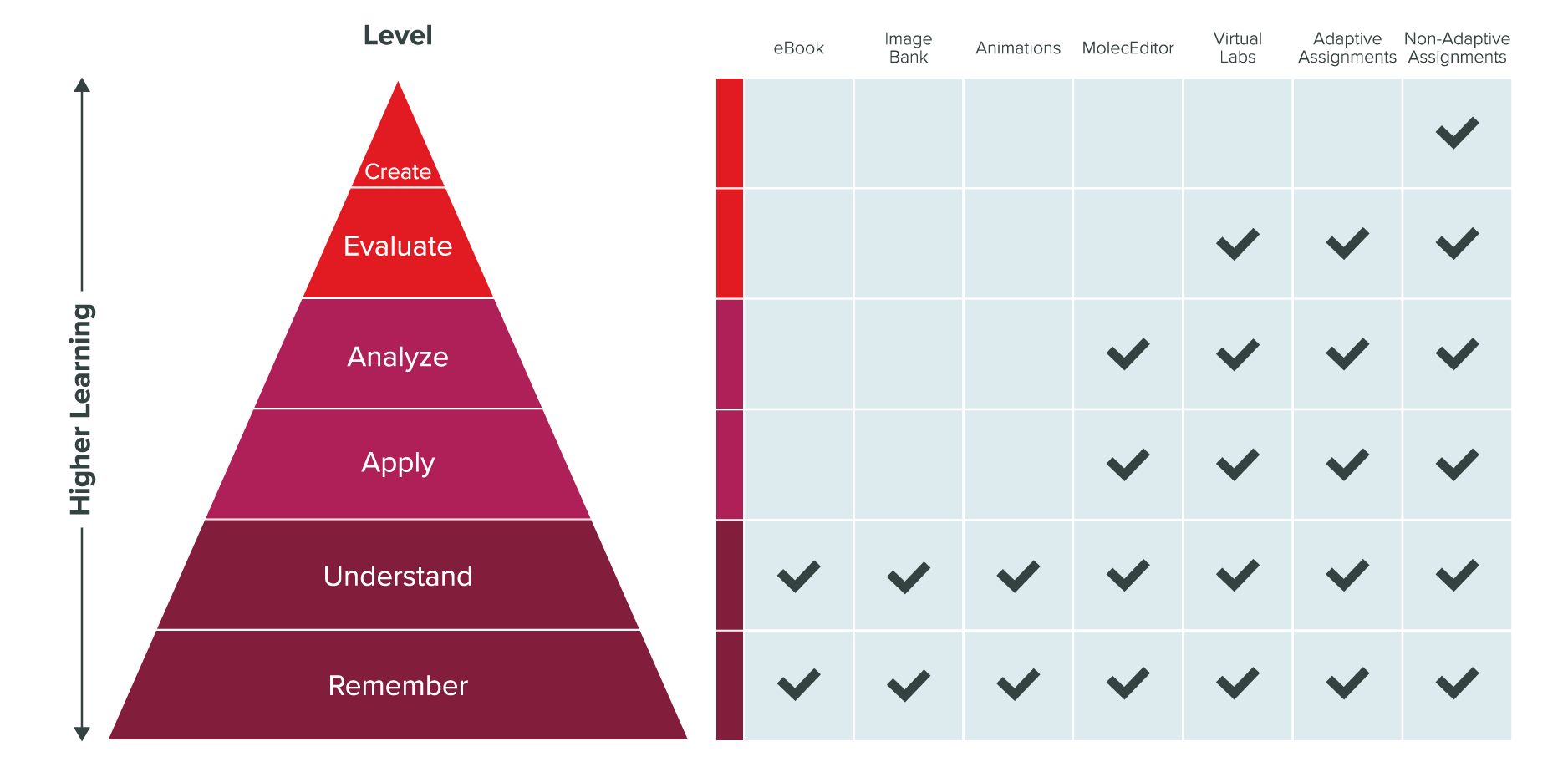Martin S. Silberberg | Patricia G. Amateis | Rashmi Venkateswaran | Lydia Chen
Available Now
A Message from
Our Co-author Rashmi
Rashmi Venkateswaran, Canadian co-author of Silberberg,
Chemistry: The Molecular Nature of Matter and Change.
Overview
Silberberg, Chemistry: The Molecular Nature of Matter and Change, is recognized for setting the standard amongst General Chemistry course resources.
The Third Canadian Edition continues to maintain an unparalleled reputation with the most accurate macroscopic-to-molecular illustrations, consistent step-by-step problem-solving approach, and an extensive collection of end-of-chapter problems, including a wide range of difficulties and applications. IUPAC consistency, integration of metric and SI units, and expanded coverage of organic chemistry in Silberberg, address the General Chemistry course needs of many Canadian post-secondary institutions.
McGraw Hill’s ALEKS online adaptive assessment and learning system is available to accompany the Third Canadian Edition of Silberberg, to support a wide range of teaching and learning.
Table of Contents
Chapter 1 Keys to the Study of Chemistry
Chapter 2 The Components of Matter
Chapter 3 Stoichiometry and Chemical Equations
Chapter 4 Gases and the Kinetic-Molecular Theory
Chapter 5 Thermochemistry: Energy Flow and Chemical Change
Chapter 6 Quantum Theory and Atomic Structure
Chapter 7 Electron Configuration and Chemical Periodicity
Chapter 8 Models of Chemical Bonding
Chapter 9 The Shapes of Molecules
Chapter 10 Theories of Covalent Bonding
Chapter 11 Intermolecular Forces: Liquids, Solids, and Phase Changes
Chapter 12 The Properties of Mixtures: Solutions and Colloids
Chapter 13 Periodic Patterns in the Main-Group Elements
Chapter 14 Kinetics: Rates and Mechanisms of Chemical Reactions
Chapter 15 Equilibrium: The Extent of Chemical Reactions
Chapter 16 Acid-Base Equilibria
Chapter 17 Ionic Equilibria in Aqueous Systems
Chapter 18 Thermodynamics: Entropy, Gibbs Energy, and the Direction of Chemical Reactions
Chapter 19 Electrochemistry: Chemical Change and Electrical Work
Chapter 20 Organic Compounds and the Atomic Properties of Carbon
Chapter 21 Organic Reaction Mechanisms
Chapter 22 Special Topics in Organic Chemistry
Chapter 23 The Elements in Nature and Industry
Chapter 24 Transition Elements and Their Coordination Compounds
Chapter 25 Nuclear Reactions and Their Applications
Appendix A Common Mathematical Operations in Chemistry
Appendix B Standard Thermodynamic Values for Selected Substances
Appendix C Equilibrium Constants for Selected Substances
Appendix D Standard Electrode (Half-Cell) Potentials
Appendix E Infrared Absorptions for Representative Functional Groups
Appendix F 1H Nuclear Magnetic Resonance (NMR) Shifts
Hear from Your Peers
What Challenges are Canadian General Chemistry Faculty Facing in their Course?
On February 25, 2021, McGraw Hill Canada hosted a professional development event about Achieving Student Equity through Technology in the General Chemistry Course. This event brought together General Chemistry instructors from across Canada to discuss some of the challenges they've experienced before and during COVID-19. The lively and interactive discussion was facilitated by Canadian Silberberg, 3ce author Dr. Rashmi Venkateswaran, followed by a demonstration of ALEKS Chemistry by Dr. Katie Leach.
What's Inside
Purchase Options
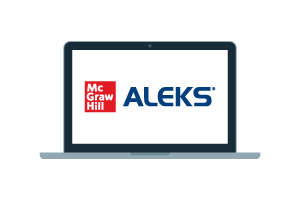

ALEKS
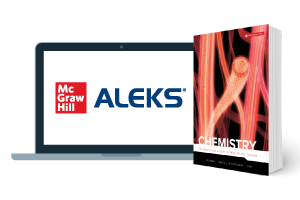

ALEKS + Print Text
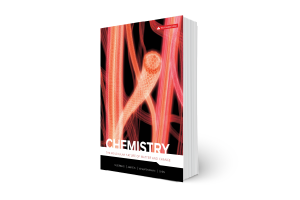

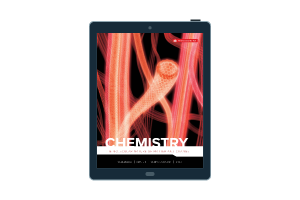

eBook
Available Now
About the Authors


Martin S. Silberberg
Martin S. Silberberg received a B.S. in Chemistry from the City University of New York and a Ph.D. in Chemistry from the University of Oklahoma. He then accepted a position as research associate in analytical biochemistry at the Albert Einstein College of Medicine in New York City, where he developed methods to study neurotransmitter metabolism in Parkinson’s disease and other neurological disorders. Following six years in neurochemical research, Dr. Silberberg joined the faculty of Bard College at Simon’s Rock, a liberal arts college in Massachusetts known for its excellence in teaching small classes of highly motivated students. As head of the Natural Sciences Major and Director of Premedical Studies, he taught courses in general chemistry, organic chemistry, biochemistry, and liberal-arts chemistry. The small class size and close student contact afforded him insights into how students learn chemistry, where they have difficulties, and what strategies can help them succeed. Dr. Silberberg decided to apply these insights in a broader context and established a textbook writing, editing, and consulting company. Before writing his own texts, he worked as a consulting and development editor on chemistry, biochemistry, and physics texts for several major college publishers. He resides with his wife Ruth in the Pioneer Valley near Amherst, Massachusetts, where he enjoys the rich cultural and academic life of the area and relaxes by cooking, gardening, and singing.


Patricia G. Amateis
Patricia G. Amateis graduated with a B.S. in Chemistry Education from Concord University in West Virginia and a Ph.D. in Analytical Chemistry from Virginia Tech. She has been on the faculty of the Chemistry Department at Virginia Tech for 28 years, teaching General Chemistry and Analytical Chemistry. For the past 13 years, she has served as Director of General Chemistry, responsible for the oversight of both the lecture and lab portions of the large General Chemistry program. She has taught thousands of students during her career and has been awarded the University Sporn Award for Introductory Teaching, the Alumni Teaching Award, and the William E. Wine Award for a history of university teaching excellence. She and her husband live in Blacksburg, Virginia, and are the parents of three adult children. In her free time, she enjoys biking, hiking, competing in the occasional sprint triathlon, and playing the double second in Panjammers, Blacksburg’s steel drum band.


Rashmi Venkateswaran
Rashmi Venkateswaran received her B.Sc. (Hon) in Chemistry from Carleton University in Ottawa and her Ph.D. in Chemistry from the University of Ottawa. She taught at a progressive magnet school in Charleston, South Carolina, and also taught chemistry and physics at Limestone College in South Carolina before returning to Canada, where she was invited to take a position as Senior Instructor and Undergraduate Laboratory Coordinator at the University of Ottawa. In this position, she was encouraged to develop new teaching methods and use emerging technology to improve student learning at the first-year level in large class sections of 420 students. She also redesigned and renewed the first-year laboratory component of the course in both English and French for classes of 2500+ students. Currently, she is focusing on applying novel pedagogical approaches to the teaching of smaller classes for students in first year with little or no previous chemistry background. The smaller groups of 100 to 150 students have allowed her to work more closely with the students and teach in a more personal and collaborative environment. In 2012, Dr. Venkateswaran was nominated by students for the 2012 Capital Educators’ Award. Prior to writing this text, Dr. Venkateswaran has been a reviewer of many textbooks and journals and has been active in publishing chemistry articles for the general public. She has also written chemistry content for other textbooks. Dr. Venkateswaran is a strong proponent of outreach programs in science for the general public, with a view to reviving interest in science and mathematics in general and chemistry in particular. She performs shows for the public and at schools called “The Magic of Chemistry” in which she uses chemical demonstrations to illustrate real-life chemistry in a way that encourages interest in both youth and adults. Dr. Venkateswaran also has a B.A. and an M.A. in South Indian Classical Music (Vocal), which she obtained in India after completing her B.Sc. and before beginning her Ph.D. She is a professional performing artist and has given concerts across North America and in India. She relaxes by singing and cooking with her husband, Hari; her son, Amaresh; and her daughter, Nikhila.


Lydia Chen
Lydia Chen received her Ph.D. in chemistry from the University of Alberta in the area of method development of arsenic speciation analysis in environmental and biological systems. Shortly after graduating, she joined Brock University, where she transformed the first-year chemistry tutorial to a two-stage tutorial format. This work has led to the adoption of this unique collaborative assessment method in upper-year chemistry courses. She received the Don Ursino Award for Excellence in the Teaching of Large Classes in 2014 and the Faculty of Mathematics and Science—Distinguished Teaching Award in 2015 at Brock University. In 2017, she joined the Department of Chemistry and Biology at Ryerson University, where she led chemistry education development programs with a strong emphasis on supporting students and faculty in a blended and fully online learning environment. Her research programs were funded externally by the Ontario Centre of Excellence—Voucher for Innovation and Productivity I Grant and internally by the Learning & Teaching Grant and the Blended Learning Lab Grant from Ryerson University. In 2020, she joined the Department of Chemistry and Chemical Biology at McMaster University as a tenure-track teaching faculty. Her research interests are split between the realms of chemistry education and analytical chemistry. She is a former chair of the Canadian Institute for Chemistry—Chemistry Education Division. She lives in Norwich, Ontario, with her husband, Colin. They enjoy spending time together to try out new foods and recipes that are inspired by their childhood memories and travelling.


